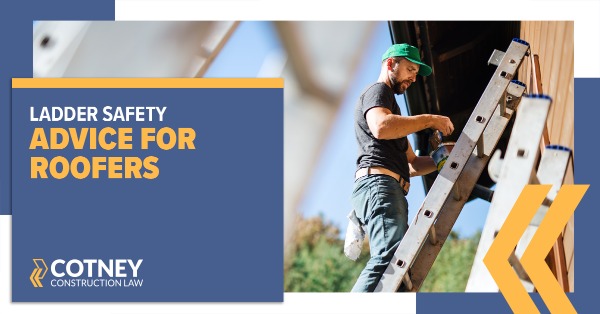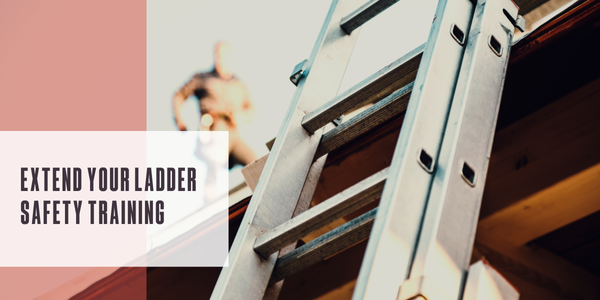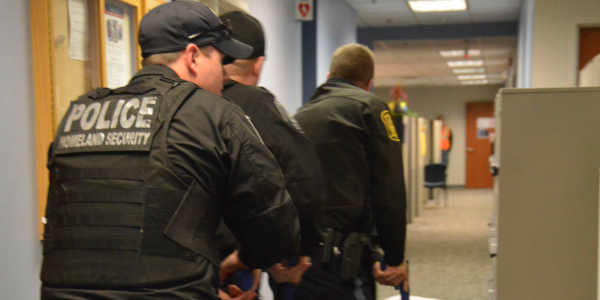5 Pieces of Safety Advice For The Fall

By Cass Jacoby.
Focus on the Fall in fall protection this year, with some seasonal tips to keep your crew safe year-round.
This autumn season, we are reminded, by name, of the importance of fall protection, especially when the weather is starting to get colder. Each season brings its own construction hazards, from heat illness in summer to cold temperatures and icy conditions in winter, and autumn is no exception. Whether you are wrapping up large summer projects or scrambling to get a new build weather-tight before winter, autumn construction poses some unique hazards to beware of. Read on and follow these tips to protect your roofing crews as we enter a new season.
1 - Take precautions in muddy conditions
Spring isn’t the only season with a monopoly on rainy days. The fall boasts plenty of soggy days of its own, so make sure that you have a rainy-day plan.
Rain is an obvious hindrance for roofers; slipping and falling is just one reason why roofing is one of the most dangerous jobs in the U.S. Although the heat is dangerous, working in the rain is also very risky. On commercial roofs, rain can turn many single-ply membranes into what may seem like an ice-skating rink. While it may be tempting to try and save an hour or two, the risk is not worth it. If the forecast calls for rain or thunderstorms, make sure you have a quick way to shut down for the day.
Furthermore, it is essential during this season to take mud seriously. Mud may seem harmless enough, however, it can increase the risk of slips and falls and make the ground unstable for equipment. If possible, set up drainage at the job site to help mitigate the mud. Consider laying gravel for traction in key areas.
2 - Clear leaves to prevent falls and equipment malfunctions
Fall foliage looks gorgeous on trees, but once they start falling, they become hazardous. Leaves on the ground can easily become slick and increase the likelihood of falls or block the air intake or exhaust on equipment. To prevent leaf-related complications, ensure leaves are removed from walkways and work surfaces at the beginning of the day and as needed while you work. Consider storing equipment in an enclosed space, when possible, to avoid wasting time cleaning equipment of leaves and branches.
3 - Provide adequate light
The days are getting shorter, which means less daylight. We don’t have to tell you that roofing in the dark is dangerous, but you should be extra attentive to lower lighting as the day winds down. It may be a good idea to look into additional job site lighting to ensure your crew is never at risk of working in low-lit conditions.
Remember that OSHA regulates how bright construction areas need to be, so plan your workdays for less light during the upcoming shorter days.
4 - Make allowances for cold and flu season
Cold season starts in September, and October typically marks the onset of flu season, making fall the perfect time to review your paid leave policy, offer preventative tips to keep sickness from spreading within your crew and verify that schedulers know to plan for illness-related absences when booking jobs. It can be hard to encourage sick employees to stay home or scramble to fill an absence, but there simply isn’t space on the roof for illness. Encourage your employees to get flu shots and cover their mouths when they cough!
5 – Make sure you have the latest safety training
A new season is a great time to take stock of what training your crew might need or to review any amendments to your safety checklists. Safety training is a continuous, ongoing process, and part of that recommends ensuring you are staying up to date on OSHA requirements and always using the best practices to keep your employees safe.
It is no mere coincidence that as we approach the new season, more and more projects are requiring fall protection training and spelling it out in their contracts. Consider sending your appointed fall-safety person to more fall-protection training and updating your toolbox talk reminders for the season.
Conclusion
Fall can be a busy, productive time for many contractors. Using a technology tool like Jobba with built-in safety checklists is a great way to kickstart an initiative to keep your employees safe no matter the season.
Learn more about Jobba Trade Technologies in their RoofersCoffeeShop® Directory or visit www.jobba.com.
About Cass
Cass works as a reporter/writer for RoofersCoffeeShop, MetalCoffeeShop AskARoofer and MetalCoffeeShop. When she isn’t writing about roofs, she is putting her Master degree to work writing about movies and dancing with her plants.






















Comments
Leave a Reply
Have an account? Login to leave a comment!
Sign In